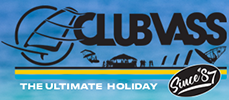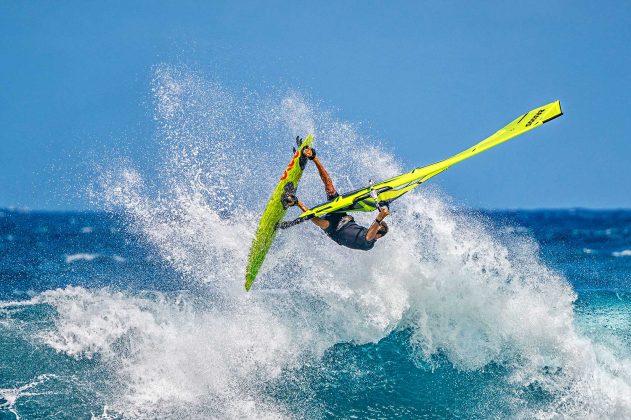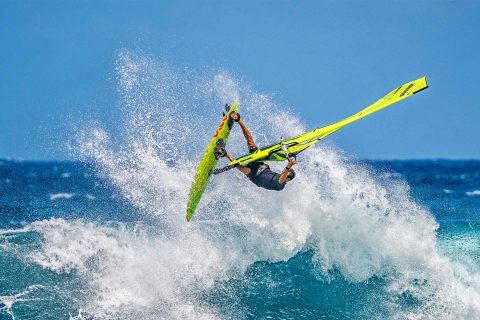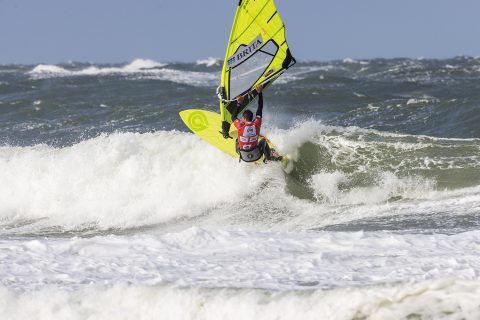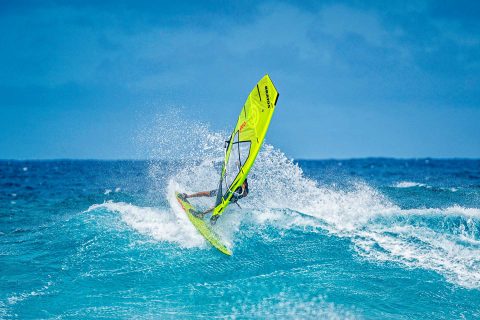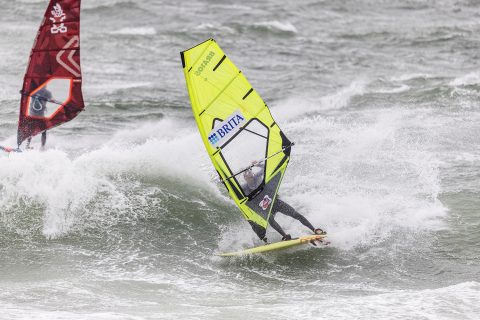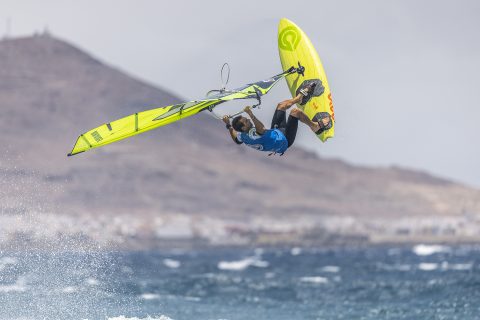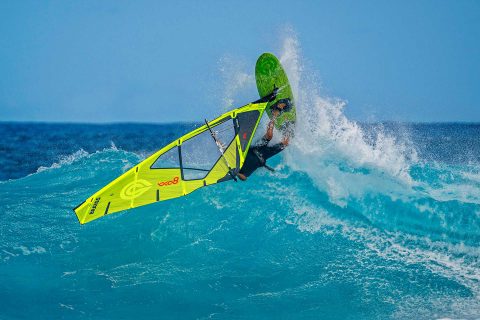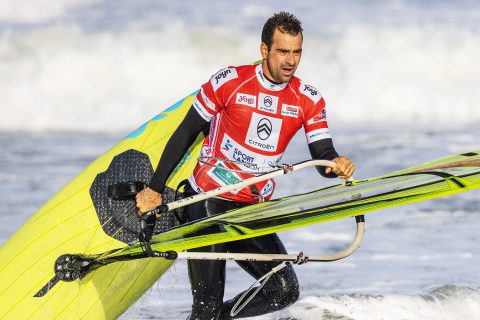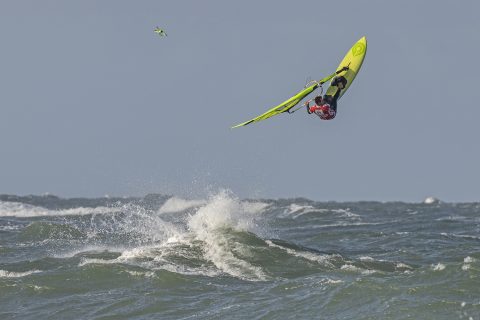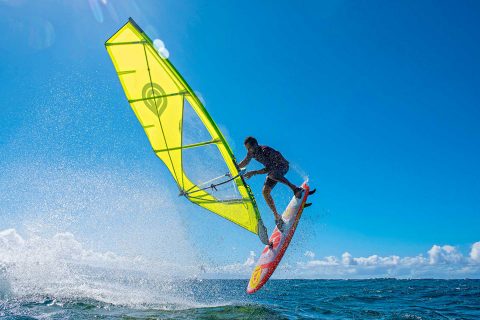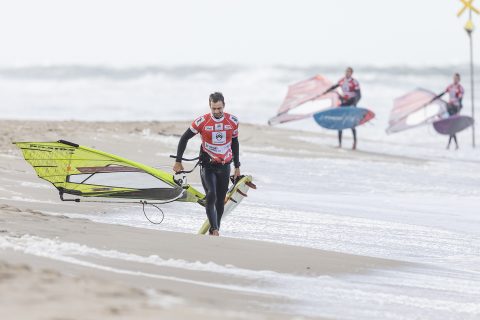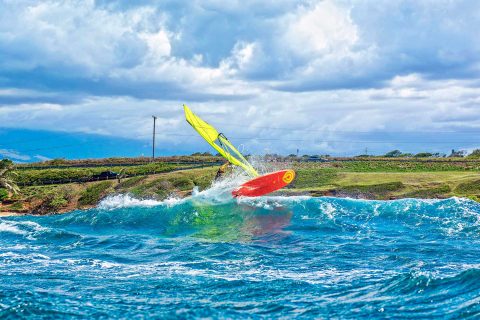BOARD TALK: MARCILO BROWNE
In our new series, we caught up with the four-time PWA/ IWT wave champion, Marcilio Browne, to find out all about his current quiver of wave boards and how he sets them up!
Photos: Fish Bowl Diaries and PWA/ Carter.
What is your height and weight?
MB: “I am 188 cm and weigh 85 KG”
Tell us about the Quad 8 and how it is different to last year’s model!
MB: “I would say the new quad is a continuation of the work we did in the past but for sure spiced up and more radical on better waves, while keeping all that speed and mobility. Not to forget it has also been fine-tuned everywhere else from the outline, to the rails and tail!”
What do you love about the Quad 8?
MB: “I love how forgiving and all around it is. I could take this board anywhere in the world and have fun with it, it doesn’t matter what the conditions are. Off course I have my own customs that are more specific for certain waves and locations, but I am very impressed on how versatile the Quad 8 is.”
In what conditions do you ride the Quad 8?
MB: “I ride it when its side, side offshore down the line and also on super windy onshore days, like Pozo conditions or any onshore up to 4.2m or 4.5m. It is very fast and stable, so it jumps high and keeps very good speeds on the wave when its small and almost straight onshore. Obviously, it is also a great board when conditions improve and its more side shore with bigger waves.”
What size Quad would you normally ride at Hookipa on a typical day?
MB: “I would say the 84L for sure. I am very comfortable on this board riding anywhere between 4.5 to 5.0, which cover most Ho’okipa days.”
Do you use your Quad in onshore conditions like Pozo…and how would it be set up differently?
MB: “Yes, I do ride the quads in onshore conditions like Pozo. Mostly the 80L and the 84L. For those conditions I like having the fins a bit further back as well as the mast track. Sometimes I also like to experiment with riding some bigger side fins when the waves are small.
What size fins do you typically use and where do you have them positioned in the boxes. When and why would you change any fin sizes and positions?
MB: “For the quads I ride mostly 14.5cm and 9cm. I usually ride the centre fin directly under my foot and the side fins two fingers apart from the centre. If the conditions are very onshore, I will move everything about one finger back. For the Thruster I pretty much only ride the 92L. On those, I like to ride 18cm with 11cm sides and if the waves are decent, I like to go 10cm sides. For the thruster, I also like having the centre fin directly under my foot and the side fins about 2.5 fingers apart. And on that board I would also move everything about a finger back if the conditions were onshore.
Are there any particular foot strap positions you use when you set up a new board?
MB “When I set up the production boards, I usually go all the way back on the back-foot and all the way forward on the front foot as this is the stance I prefer. I also have some custom boards specific for Ho’okipa, those boards are little longer/narrower than production. On those I stand at about 20cm from the tail and my stance is about 50cm wide.
What about the mast track position for different conditions?
MB: “I generally like to have my mast track a bit further forward than the middle of the box. But this all depends, mostly on sail size and wave size. Generally if its windier and smaller waves I would move it backwards (Pozo for example). If the waves are bigger or if I am riding a bigger sail, I will have it a bit further forward.”
What was new with the Custom Thruster 4 in 2024/ 25?
MB: “The outline has been updated, also well as the rocker line and rails have been adjusted. It is for sure a much looser and more forgiving board.”
When would you switch to the Thruster?
MB: “I like riding the Thruster in some very specific conditions. If its 5.0 or 5.3/5.5 weather, side onshore with kind of bigger powerful waves, but you are still not riding super-fast because the wind has some onshore too it, that is when I love the thruster, and in those conditions, I generally ride 92L.
What sizes in the thruster would you take to a competition?
MB: “Nowadays only 92L!”
When would you bring out the Nitro and what size would you typically be using if you had to use it in a competition?
MB: “I love the Nitro when the conditions are bad. Anywhere from side, side on to straight onshore with tiny weak, mushy waves, the Nitro is all I ride. That board makes terrible conditions so much fun and that’s what I love about it.
As far as sail sizes, it can be anywhere from 4.5m to 5.7m. It mostly depends on wind direction and wave quality. If I am on 4.5m and its straight onshore I am super happy riding the Nitro 89, then I can ride the 98L on those same conditions from 5.0m to 5.7m. Also, I had some fun light wind sessions on the Nitro’s when it’s been side/side onshore with weaker waves, even at Ho’okipa during summer, the board is a blast, it literally doubled the amount of days I was sailing.
How important to you is it to have light boards?
MB: “Very important, especially while competing everything matters and makes a difference, even if it is only in your mind! But generally lighter boards feel more alive and get going quicker, they are also more responsive, which are all things I love from a board.”
DESIGN
How much are you involved in the design process?
MB: “On the production line I am quite involved along with Francisco Goya. Francisco usually starts them from my favourite custom board file and then tunes up from there. I obviously test them out along the way and give him some feedback along with the rest of the team. It is amazing to watch the way Francisco has been working on this boards. He is very sensitive and has a really specific feeling he wants to get out this boards and he won’t settle for anything until he gets exactly what he wants! It doesn’t matter how long or how many prototypes it takes. I have never seen anyone work so hard on a production line. His attention to detail is unmatched and there is a lot to be learned just from watching him doing his thing. On my own boards I would say I am very involved, from designing them out on the computer to checking all the steps along the way, from measurements, to construction and the weight! … This is a very big passion for me! I love it, especially when you see it all coming together and you get rewarded with a magic board, there is no better feeling!”
QUIVER
If you went on a trip what is the typical quiver of boards you would take, sizes quads/ thruster etc?
MB: “It obviously all depends on where I am going and if it is an event etc… But to simplify, if I could choose three boards to do a lap around the world it would be quad 80, quad 84 and thruster 92. With those three boards, I would say I would be covered for 95% of wave conditions around the globe.
If you had to choose a quiver of four boards to cover everything what would that be!
MB: “Quad 80, quad 84 , thruster 92 and the Nitro 98!”
What changes can we expect for 2026?
MB: “We are aiming to keep improving and make boards that are light, fast and ride tight in the pocket. I love the idea of bringing wave riding as close as possible to surfing. I also like having boards to sail around the world on subpar conditions and still have a blast.”

